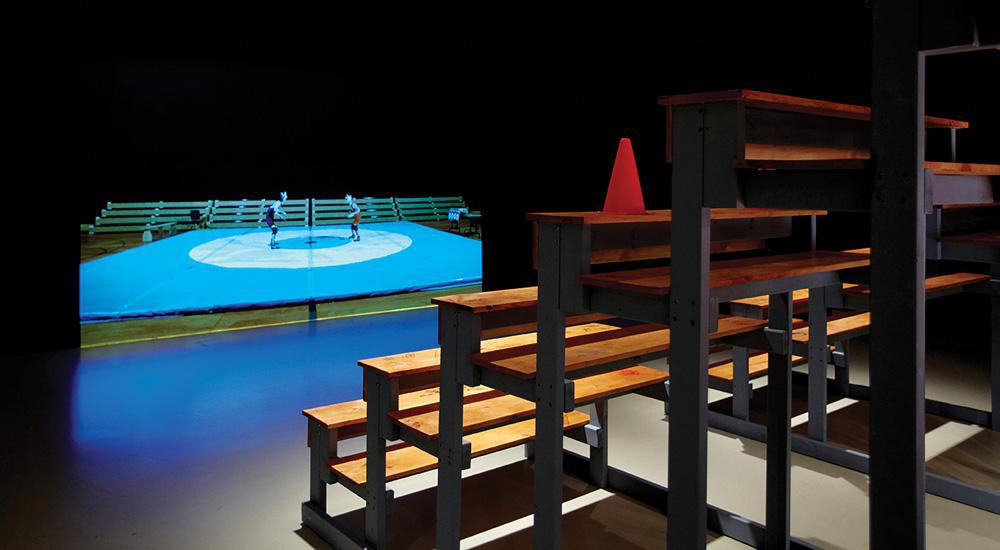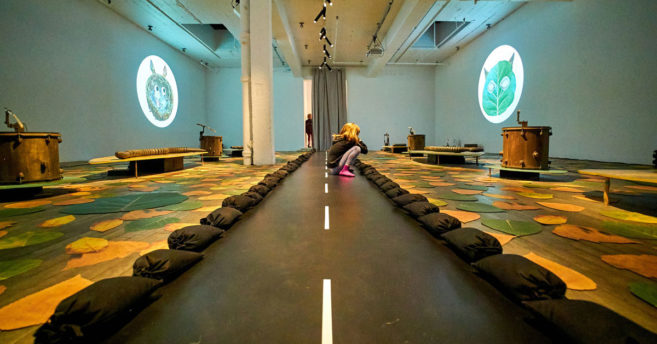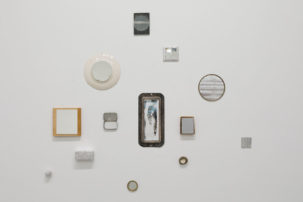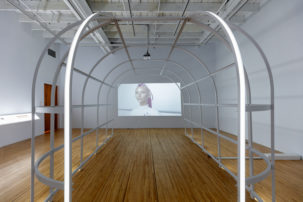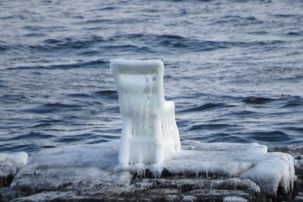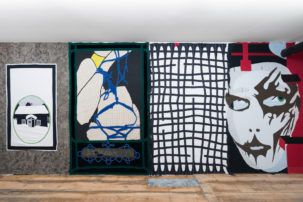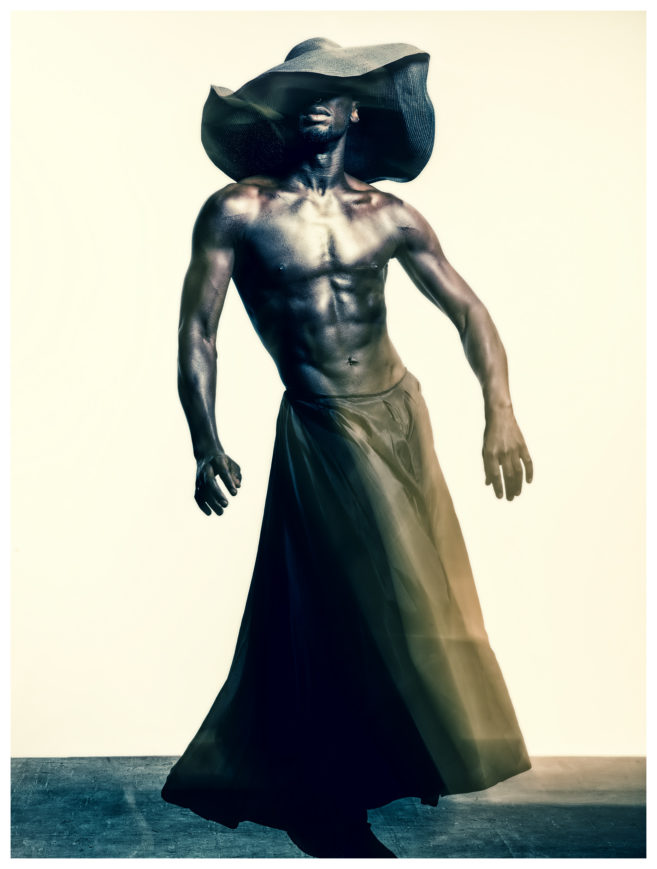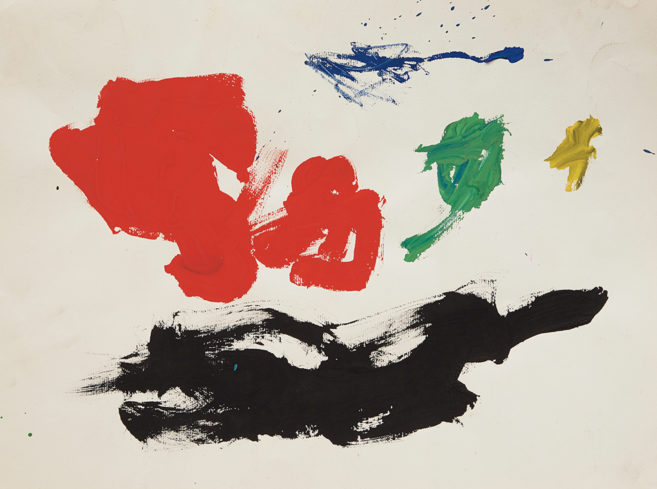It’s almost too easy to get swept up by the inventiveness of Graeme Patterson. Moments of scaled-down architecture overtake pieces of furniture, which then become the settings for tiny films, which in turn are carefully reinstalled back into the architecture. The intricacy of this, laid out with a good dose of Wes Anderson–like nostalgic whimsy, makes it difficult not to want to instantly hand over your approval.
Yet with “Secret Citadel,” a touring exhibition that will move from Hamilton to Halifax to Montreal over the next year, something even heavier, more crucial, has been achieved. Patterson is as playful as ever, yet the real strength of “Secret Citadel” is in its capacity to be aching, resonant, even subtle.
This exhibition focuses on a quartet of formidable interrelated sculptural installations. In one, a mountain conceals a secret workshop that has attached itself umbilically to a pair of suburban homes. In another, a small, multi-roomed gymnasium lies underneath a life-size set of bleachers, while in the others, a summer camp bus collision stretches over a twin set of bunk beds and a two-storey tavern perches on top of a functioning player piano.
Each environment forms a chapter in a semi-autobiographical story of two youths (told via an integrated series of stop-motion videos) as they transition from a creative childhood friendship into competition, rivalry and ultimately adult estrangement. To amp it up even further, Patterson portrays his two protagonists as an anthropomorphized cougar and bison.
While it may sound too sprawling a concept to succeed, it somehow maintains focus. Patterson took five years to complete the works, and what seems the most valuable part of his effort is the commitment to mine a single tiny stream of his own past—as if he wants to prove that the slighter the memory, the greater the mythic charge and psychological nuance there is to be extracted.
Patterson’s films pay close attention to the monotonous, semi-conscious actions of the boys, be they bouncing on trampolines, swivelling on chairs, wrestling or burning toys. Occasionally these banalities are juxtaposed with Jungian episodes of forest battles, or fantasized murders at an archery range. No moment is necessarily greater than the other; epic or banal, everything is fraught and urgent and critical when you’re young and trying to sort through emotional attachments.
The exhibition concludes with Player Piano Waltz (2013), the most compact and intense of the four sculptures, yet whose actions are the most muted. Instead of repetitious play or swells of masculine ambition, there are only microscopic gestures: riding an elevator, throwing darts, sitting in a daydream. It is one thing to watch humans being lonely in a bar; when it’s a cougar in a shabby orange blazer and tights, it’s surprisingly devastating.
This is a review from the Spring 2014 issue of Canadian Art. To read more from this issue, view its table of contents. To read the entire issue, pick up a copy on newsstands or the App Store until June 14.

